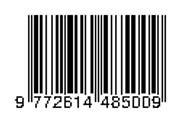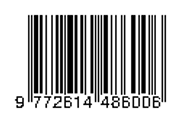Bottle Refill Water Payment Using E-Card
DOI:
https://doi.org/10.26905/jeemecs.v6i2.10126Keywords:
Payment ESP32, E-Card Reading, Distance Dringking WaterAbstract
The high demand for drinking water makes drinking water sold in many stores, it makes buyers have to enter the store first and queue to pay for it. Even though there are people who cannot wait too long. This makes people want fast and easy payment for drinking water. So a fast and easy payment tool is needed. This paper describes the payment of refillable water bottles using ESP32-based E-Card. Testing is done in three stages: (1) E-Card reading distance testing, (2) payment testing in successful conditions, and (3) payment testing in failed conditions. The first test found that the E-Card reading distance is 3.5 cm but when given an aluminum plate barrier, the E-Card cannot work. From the results of the second test the payment was as expected. And the third test states that the tool works well even in conditions of inappropriate payment. The weakness of this tool is that it cannot pay with coins.Downloads
References
J. Jamaaluddin, D. Hadidjaja, I. Sulistiyowati, E. A. Suprayitno, I. Anshory, and S. Syahrorini, “Very short term load forecasting peak load time using fuzzy logic,†in IOP Conference Series: Materials Science and Engineering, 2018. doi: 10.1088/1757-899X/403/1/012070.
T. Susana, “Air Sebagai Sumber Kehidupan,†Oseana, vol. 28, no. 3, pp. 17–25, 2013.
C. Felania, “Pengaruh ketersedian air terhadap pertumbuhan kacang hijau (Phaceolus radiatus),†Pros. Semin. Nas. Pendidik. Biol. dan Biol., vol. 5, no. 6, pp. 131–138, 2017.
W. Zikra, A. Amir, and A. E. Putra, “Identifikasi Bakteri Escherichia coli (E.coli) pada Air Minum di Rumah Makan dan Cafe di Kelurahan Jati serta Jati Baru Kota Padang,†J. Kesehat. Andalas, vol. 7, no. 2, p. 212, 2018, doi: 10.25077/jka.v7i2.804.
D. Kurnia, R. Alfatiyah, K. Subarman, M. Mualif, and T. Dahniar, “Pembinaan Pemanfaatan Limbah Botol Plastik Untuk Media Pembelajaran Ipa Interaktif,†J. Pengabdi. Kpd. Masy. Vol., vol. 1, no. 1, pp. 71–75, 2020.
J. Lizbetin, “Decision-making processes in introducing RFID technology in manufacturing company,†Nase More, vol. 65, no. 4 Special issue, pp. 289–292, 2018, doi: 10.17818/NM/2018/4SI.23.
A. Ahfas, M. B. Ulum, D. H. R. Saputra, and S. Syahrorini, “Automatic Spray Desinfectant Chicken with Android Based on Arduino Uno,†IOP Conf. Ser. Earth Environ. Sci., vol. 519, no. 1, 2020, doi: 10.1088/1755-1315/519/1/012013.
S. Nasional, T. Elektro, S. Informasi, and T. Informatika, “Seminar Nasional Teknik Elektro, Sistem Informasi, dan Teknik Informatika,†pp. 219–224, 2021.
Fajar Ratnawati, Muhamad Azren, and Agus Tedyyana, “Aplikasi Pembelian Air Minum Isi Ulang Berbasis Android,†Digit. Zo. J. Teknol. Inf. dan Komun., vol. 10, no. 1, pp. 88–100, 2019, doi: 10.31849/digitalzone.v10i1.2347.
J. Jamaaluddin, “Sistem Kontrol Pendingin Mobil Ramah Lingkungan Berbasis Android,†CYCLOTRON, 2019, doi: 10.30651/cl.v2i1.2528.
S. Khayyirah, R. A. Kurniawan, S. G. Gemilang, U. I. N. Mataram, U. I. N. Mataram, and U. I. N. Mataram, “Analisis Penggunaan Alat Pembayaran Non Tunai Pada Tingkat Mahasiswa Universitas Islam Negeri Mataram Tahun 2021 / 2022,†Soc. J. Jur. Tadris Ilmu Pengetah. Sos., vol. 13, no. 1, pp. 6–16, 2022.
H. H. RACHMAT and G. A. HUTABARAT, “Pemanfaatan Sistem RFID sebagai Pembatas Akses Ruangan,†ELKOMIKA J. Tek. Energi Elektr. Tek. Telekomun. Tek. Elektron., vol. 2, no. 1, p. 27, 2014, doi: 10.26760/elkomika.v2i1.27.
H. SUPRIYONO, P. A. N. ROCHMAN, and M. O. TOKHI, “IoT Technology Involving Wheeled Line Follower Robot for Restaurant Services Automation,†ELKOMIKA J. Tek. Energi Elektr. Tek. Telekomun. Tek. Elektron., vol. 9, no. 1, p. 100, 2021, doi: 10.26760/elkomika.v9i1.100.
A. Santoso et al., “Simulasi Pembayaran Menggunakan RFID (Radio Frequency Identification) Pada Studi Kasus Layanan Mahasiswa,†J. Infra - Publ. Petra Christ. Univ., vol. 7, no. 2, pp. 3–6, 2019.
H. V. P. Manalu, “Perancangan Sistem Pembayaran Berbasis Radio Frequency Identification (Rfid) Pada Food Court,†J. Tek. Elektro Univ. Tanjungpura, vol. 2, no. 1, 2015.
A. Sholih et al., “Rancang Bangun Pengaman Panel Distribusi Tenaga Listrik Di Lippo Plaza Sidoarjo Dari Kebakaran Berbasis Arduino Nano,†J. ilmu-ilmu Tek. elektro dan rekayasa, 2017.
T. Hariono and H. Ashoumi, “Implementasi RFID Mobile untuk Alat Pembayaran dan Pengontrol Keuangan Santri,†Saintekbu, vol. 12, no. 2, pp. 1–12, 2020, doi: 10.32764/saintekbu.v12i1.961.
M. Lusmiawati, E. Fatkhiyah, A. Hamzah, S. Informatika, and F. T. Industri, “Jurnal SCRIPT Vol . 9 No . 2 Desember 2021 ISSN : 2338-6313 PENENTUAN OBJEK WISATA KOTA BANDUNG MENGGUNAKAN Jurnal SCRIPT Vol . 9 No . 2 Desember 2021 ISSN : 2338-6313,†vol. 9, no. 2, pp. 142–151, 2021.
N. Kesumawardhani, D. N. Ramadan, and R. Tulloh, “IMPLEMENTASI PENGUKUR BERAT DAN TINGGI BADAN DIGITAL UNTUK ANAK TERINTEGRASI APLIKASI Mposyandu Implementation of Digital Weight and Height Measurers or Children Integrated Mposyandu Application,†vol. 7, no. 5, pp. 1785–1798, 2021.
M. Zikri, Muhaimin, and F. Aidi, “Perancangan Alat Pembayaran Otomatis Pada Coffee Shop Menggunakan Debet RFID Berbasis Arduino,†J. Tekno, vol. Vol. 2, no. 1, pp. 42–50, 2019.
F. E. Christanto and R. Candra, “Implementasi Kartu Untuk Transaksi Basis Data Digital,†J. Teknol. Rekayasa, vol. 22, no. 3, pp. 133–140, 2017.
J. Jamaaluddin and I. Robandi, “Very Short Term Load Forecasting Using Hybrid Regression and Interval Type -1 Fuzzy Inference,†IOP Conf. Ser. Mater. Sci. Eng., vol. 434, no. 1, p. 012209, Dec. 2018, doi: 10.1088/1757-899X/434/1/012209.
B. S. Kusumaraga, S. Syahrorini, D. Hadidjaja, and I. Anshory, “Monitoring Kualitas Air Akuarium Berbasis Internet Of Things,†Procedia Eng. Life Sci., vol. 1, no. 2, 2021.
B. Azarm, J. Nourinia, C. Ghobadi, M. Majidzadeh, and N. Hatami, “On development of a MIMO antenna for coupling reduction and WiMAX suppression purposes,†AEU - Int. J. Electron. Commun., vol. 99, pp. 226–235, 2019, doi: 10.1016/j.aeue.2018.11.038.
Downloads
Published
Issue
Section
License
Our ethic statements are based on COPE’s Best Practice Guidelines for Journal Editors.
Publication decisions
The editor is responsible for deciding which of the articles submitted to the journal should be published.
The editor may be guided by the policies of the journal's editorial board and constrained by such legal requirements as shall then be in force regarding libel, copyright infringement and plagiarism. The editor may confer with other editors or reviewers in making this decision.
Fair play
An editor at any time evaluate manuscripts for their intellectual content without regard to race, gender, sexual orientation, religious belief, ethnic origin, citizenship, or political philosophy of the authors.
Confidentiality
The editor and any editorial staff must not disclose any information about a submitted manuscript to anyone other than the corresponding author, reviewers, potential reviewers, other editorial advisers, and the publisher, as appropriate.
Disclosure and conflicts of interest
Unpublished materials disclosed in a submitted manuscript must not be used in an editor's own research without the express written consent of the author.
Duties of Reviewers
Contribution to Editorial Decisions
Peer review assists the editor in making editorial decisions and through the editorial communications with the author may also assist the author in improving the paper.
Promptness
Any selected referee who feels unqualified to review the research reported in a manuscript or knows that its prompt review will be impossible should notify the editor and excuse himself from the review process.
Confidentiality
Any manuscripts received for review must be treated as confidential documents. They must not be shown to or discussed with others except as authorized by the editor.
Standards of Objectivity
Reviews should be conducted objectively. Personal criticism of the author is inappropriate. Referees should express their views clearly with supporting arguments.
Acknowledgement of Sources
Reviewers should identify relevant published work that has not been cited by the authors. Any statement that an observation, derivation, or argument had been previously reported should be accompanied by the relevant citation. A reviewer should also call to the editor's attention any substantial similarity or overlap between the manuscript under consideration and any other published paper of which they have personal knowledge.
Disclosure and Conflict of Interest
Privileged information or ideas obtained through peer review must be kept confidential and not used for personal advantage. Reviewers should not consider manuscripts in which they have conflicts of interest resulting from competitive, collaborative, or other relationships or connections with any of the authors, companies, or institutions connected to the papers.
Duties of Authors
Reporting standards
Authors of reports of original research should present an accurate account of the work performed as well as an objective discussion of its significance. Underlying data should be represented accurately in the paper. A paper should contain sufficient detail and references to permit others to replicate the work. Fraudulent or knowingly inaccurate statements constitute unethical behavior and are unacceptable.
Originality and Plagiarism
The authors should ensure that they have written entirely original works, and if the authors have used the work and/or words of others that this has been appropriately cited or quoted.
Multiple, Redundant or Concurrent Publication
An author should not in general publish manuscripts describing essentially the same research in more than one journal or primary publication. Submitting the same manuscript to more than one journal concurrently constitutes unethical publishing behaviour and is unacceptable.
Acknowledgement of Sources
Proper acknowledgment of the work of others must always be given. Authors should cite publications that have been influential in determining the nature of the reported work.
Authorship of the Paper
Authorship should be limited to those who have made a significant contribution to the conception, design, execution, or interpretation of the reported study. All those who have made significant contributions should be listed as co-authors. Where there are others who have participated in certain substantive aspects of the research project, they should be acknowledged or listed as contributors.
The corresponding author should ensure that all appropriate co-authors and no inappropriate co-authors are included on the paper, and that all co-authors have seen and approved the final version of the paper and have agreed to its submission for publication.
Disclosure and Conflicts of Interest
All authors should disclose in their manuscript any financial or other substantive conflict of interest that might be construed to influence the results or interpretation of their manuscript. All sources of financial support for the project should be disclosed.
Fundamental errors in published works
When an author discovers a significant error or inaccuracy in his/her own published work, it is the author’s obligation to promptly notify the journal editor or publisher and cooperate with the editor to retract or correct the paper.










